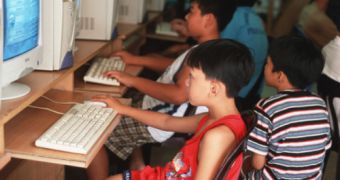In a new scientific study, researchers noticed that young children are heavily influenced by the layout of the Internet page they are visiting. Namely, the way in which the content of the site is structured exerts a heavy influence on the small ones' ability to process and later recall the information they see. The team behind the study says that such an influence should be avoided as much as possible, while children are surfing various websites. In addition, sites that are exclusively-children oriented should have a layout that facilitates the learning process and allows kids to remember relevant data.
The new research, which was published in the journal Psychology & Marketing, was conducted on approximately 200 young boys and girls who were randomly assigned to navigate four specially-designed websites. Each of the sites was built following a design principle, and the goal of the research was to analyze exactly how much influence each type had on the processing power of children. Participants were divided into two groups, 7 to 9 year-olds and 10 to 14 year-olds.
The sites featured a map, a map with learning cues, a list, and a list with learning cues, respectively. Fifty children were assigned to each site and asked to browse their content and try to remember as much as possible. Search accuracy and information recall among the first age group varied significantly, depending on the presence or absence of cues in both the map- and the list-type sites.
Results also showed that children between the ages of 7 and 9 processed the information they saw holistically, which meant that they found it a lot easier to remember data they'd learned using a map, instead of a simple list.
On the other hand, the second age group had a much higher recall percentage using lists, due to the fact that their brain development allowed them to weed out irrelevant content from the things they were searching for in a website. When asked to search again for specific things, they were quick to discover them. However, learning cues also played a role in their selection, as they found lists with cues to be the easiest form of navigation.
The researchers also note that children between the ages of 10 and 13 showed an increased capacity to process relevant information even without the cues, although that was a bit difficult. Smaller children needed the cues in order to understand exactly what the relevant data were, whereas their older peers figured that out for themselves.

 14 DAY TRIAL //
14 DAY TRIAL //